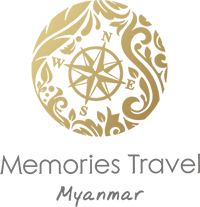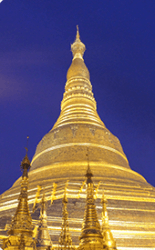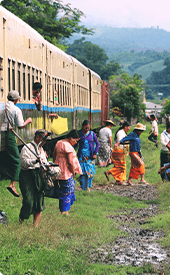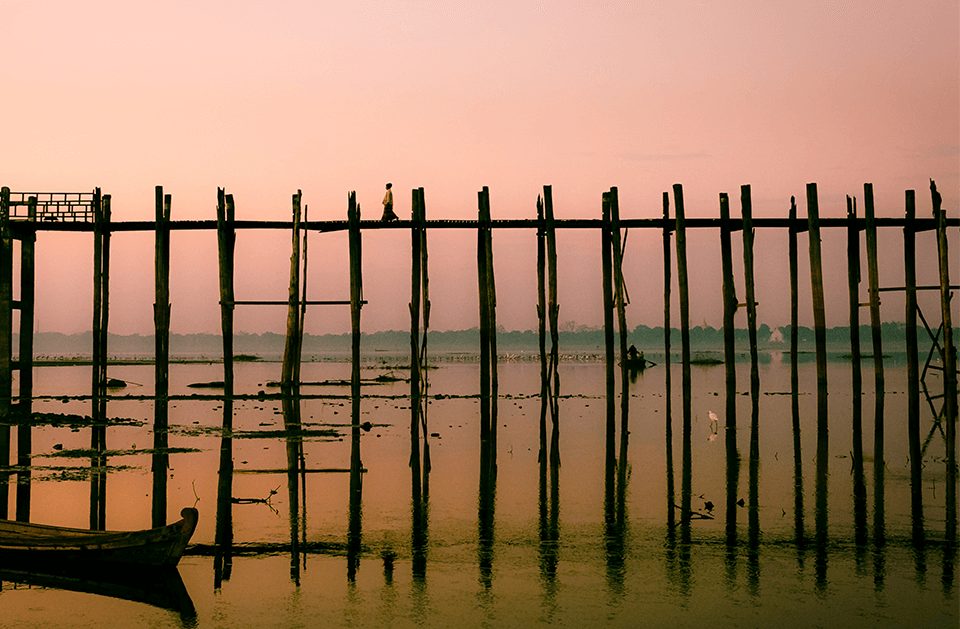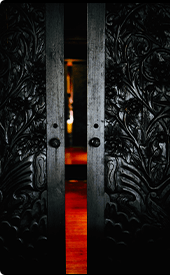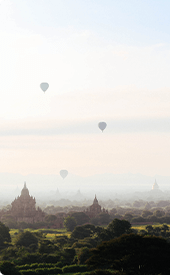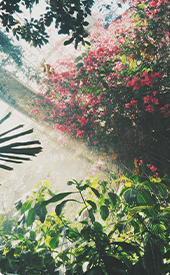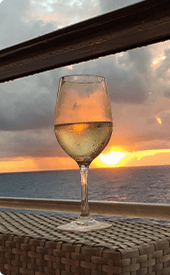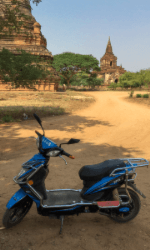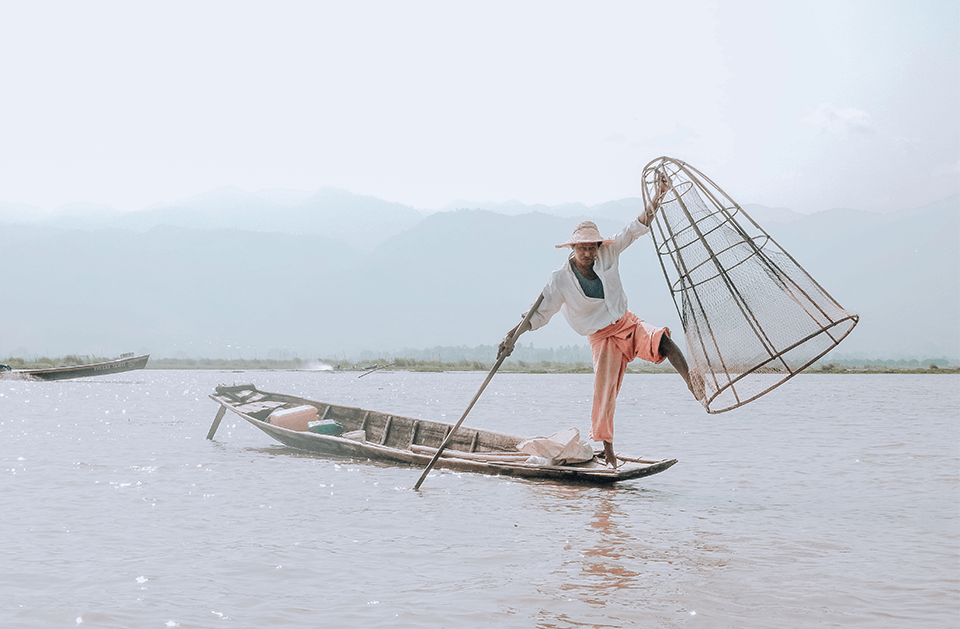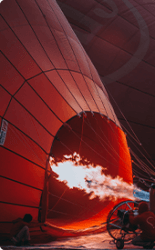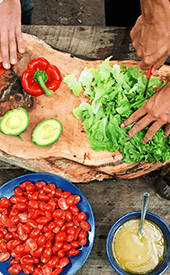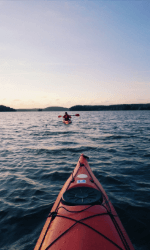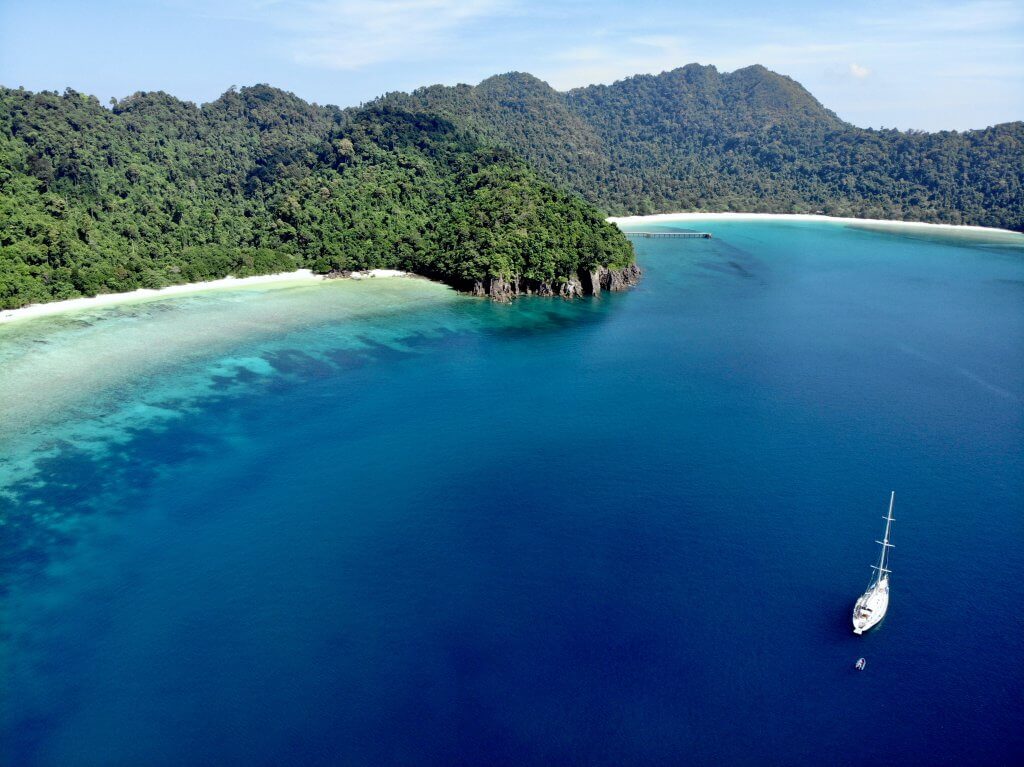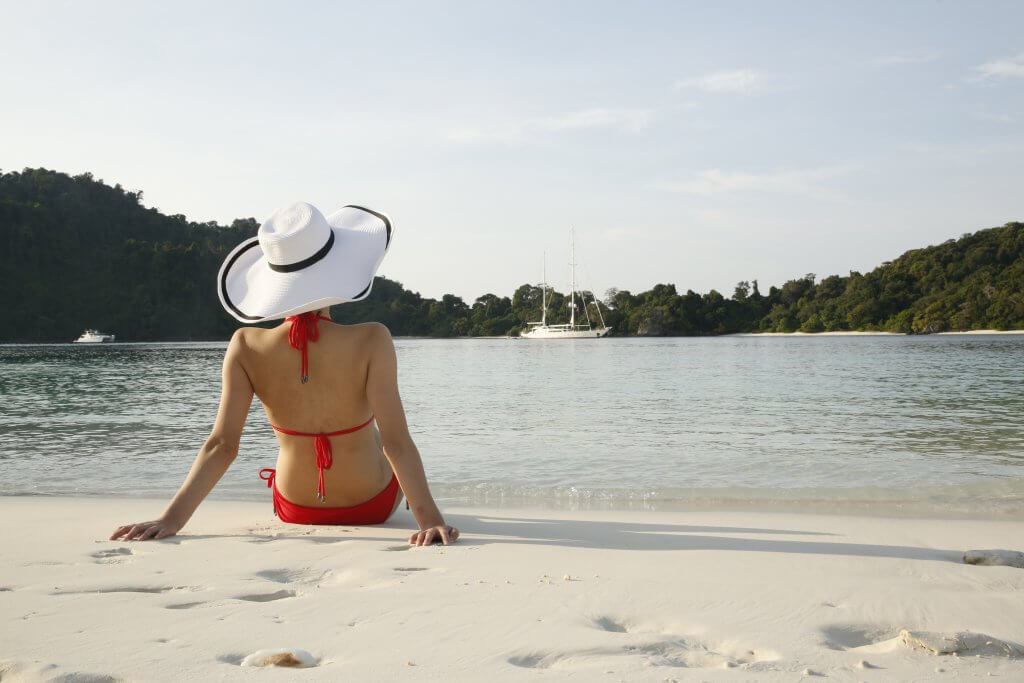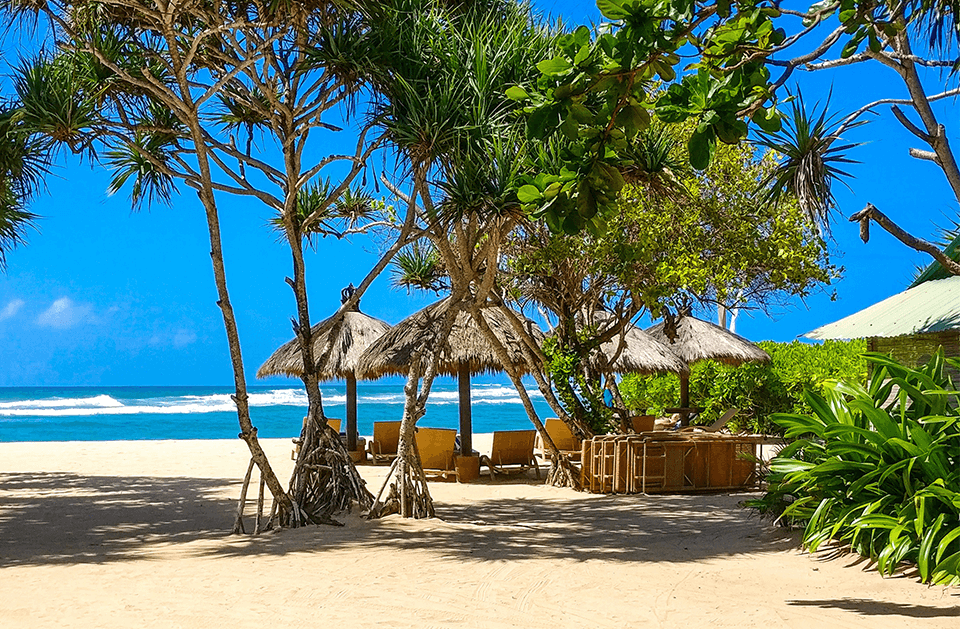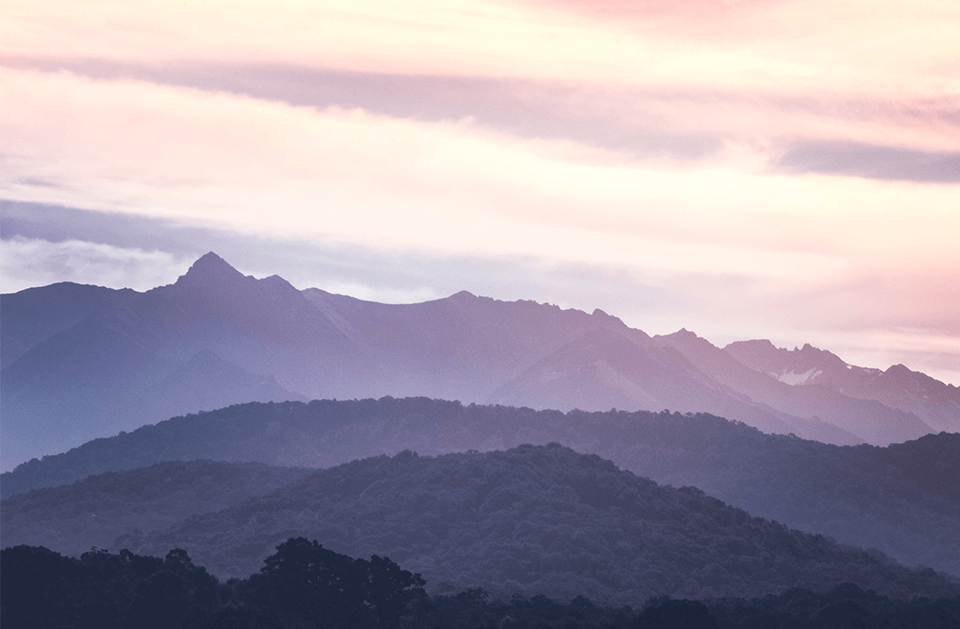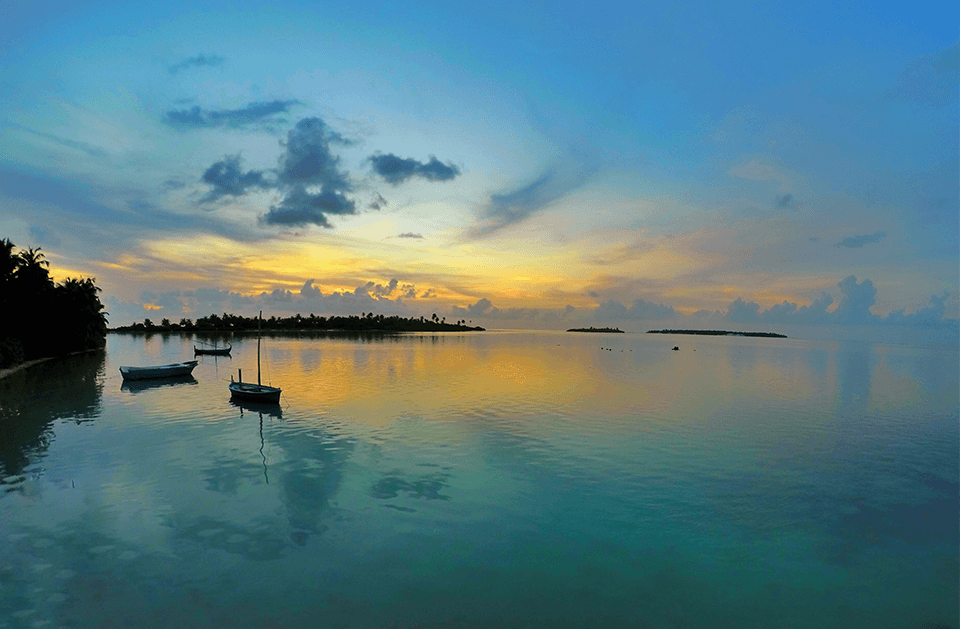
Explore DestinationsDiscover all the facets of Myanmar, from the traditional to the awe-inspiring.
Yangon
Along with its antiquated colonial buildings – many of which are in the process of restoration – its astonishing pagodas, amongst them the Shwedagon and the Botataung, its parks and two lakes flanked by wooded avenues, Yangon is a city that demands more than a few days’ visit.
Local life is at a constant bustle. If you wish, take a stroll through the busy streets of the commercial districts or along the banks of the Yangon River. As if in an effort to make up for lost time, the city is rapidly developing itself, offering bars and restaurants a-la-mode, worthy of the largest of Asia’s capitals.
Even as Yangon forfeits its title as capital of Myanmar to Naypyidaw, it continues to remain the country’s foremost city and the economic hub of the nation.
Mandalay
Mandalay, the country’s second largest city and a key center of Buddhist learning, has plenty to keep visitors occupied for a couple of days.
Its key attractions include Maha Myat Muni Pagoda, Myanmar’s second largest pilgrimage site after Shwedagon Pagoda, the former royal palace and Mandalay Hill.
Visitors can also enjoy relaxing strolls along the banks of the Irrawaddy River, itself a hive of activity. Sagaing Hill, a few kilometers from the main town, is covered with numerous monasteries, pagodas and meditation centers, and well worth a visit.
Ava, also known as Inwa, is located about 20 kilometers from Mandalay and served as the capital of Burma four times between 1364 and 1839, before a series of earthquakes devastated the city causing so much damage that it was effectively abandoned.
Bagan
Bagan, the ancient capital of a kingdom that spanned from the 9th to the 13th centuries, offers the remnants of over 2,000 Buddhist temples and pagodas, some of which have been restored.
Soar above the sacred sites in a hot air balloon and observe the locals below as they herd livestock through the fog of dawn… an experience one will not soon forget.
Make your way along the sandy trails of Bagan by bicycle (motorised bikes are available to rent) or on a horse-drawn cart. Due to its vastness, Bagan is yours to explore as a group or in solitude.
Inle-Lake
Inle Lake, one of Myanmar’s most popular destinations, resides at an altitude of 900 meters in the hills of Shan State. The lake is renowned for its Intha fishermen, stilt villages and floating tomato gardens. However, its fragile ecology is under threat from regular droughts and erosion in the surrounding hills.
Indein, one of the villages located on the shores of Inle Lake, has a popular market which, held once every five days, attracts hundreds of farmers and artisans from ethnic minorities, such as the Pa-O, who sell a range of locally produced food, goods and souvenirs.
The village also features a cluster of ancient pagodas atop a hill which is accessible via a 700-meter long path.
Mergui-Archipelago
Pristine beaches, azure waters and vibrant sea life; just a few of the incredible natural wonders you will experience here.
The Mergui Archipelago is a rarely visited area where one must navigate between the otherworldly islands yet untouched by tourism. Along the banks encircled by the blues of the Andaman Sea, white sand beaches stretch onwards to infinity.
Explore the Archipelago via a private chartered yacht, or stay at exclusive beach resorts where you enjoy first-row seats to amazing sights, every day.
Mawlamyaing
Was this where Rudyard Kipling wrote his famous poem, ‘The Road to Mandalay’? We like to think so.
The city’s most prominent landmark is the Thanlwin bridge, one of the longest road and rail bridges in Myanmar. The bridge lies on the Salween River which flows from the Tibetan Plateau into the Andaman Sea.
As an ecotourism destination, the city is rich in history, archaeology, mythology and religion. Mawlamyaing is also known as the home of the largest reclining Buddha in Myanmar.
Hpa-An
The capital of Karen State, Hpa An is a small lively city situated on the Salween River, which thrives mainly from trade with neighboring Thailand. Attractions include a colourful market, the river port and a Buddhist temple.
Sadan Cave
Another natural wonder, this cave opens onto a vast room with walls adorned with thousands of tiny Buddha sculptures in the shape of sacred symbols and animals. At the bottom of the cave, a stupa marks the entrance to a tunnel that continues for a few hundred meters into the rock.
From a natural lake within the cave, visitors can paddle a canoe along an underground stream until it emerges into local rice fields.
Ngapali
Located in the Bay of Bengal, Ngapali’s spectacular shores stretch along 6km of fine sand. The yet-untouched postcard perfect area and its attractions invite you to indulge in the beach’s dominating sense of secluded dolce far niente (the sweetness of doing nothing).
Ngapali offers vignettes of authentic local life: a wagon drawn along the beach by water buffalo at sunset, or fishermen setting their catch of the day to dry.
Consider a visit to a nearby fishing village or a brief excursion by boat to try your hand at fishing and savour the delicacy of freshly grilled catch – all options at your disposal to add a little flourish to your stay.
Loikaw
It may not be a bustling tourist destination, but that’s exactly why you should visit Loikaw.
Travel to this side of the country and set your sights on beautiful hillside scapes. Get to know distinctive tribal cultures, most famously are the Kayan, known for their ‘long-necked’ womenfolk who wear brass coils around their necks.
The main attraction in Loikaw is the Taung Kwe Pagoda, scenically built on a hill overlooking the vast plains. Venture out beyond the city and to nearby countryside and villages; with few visitors travelling this way, you can take your time exploring.
